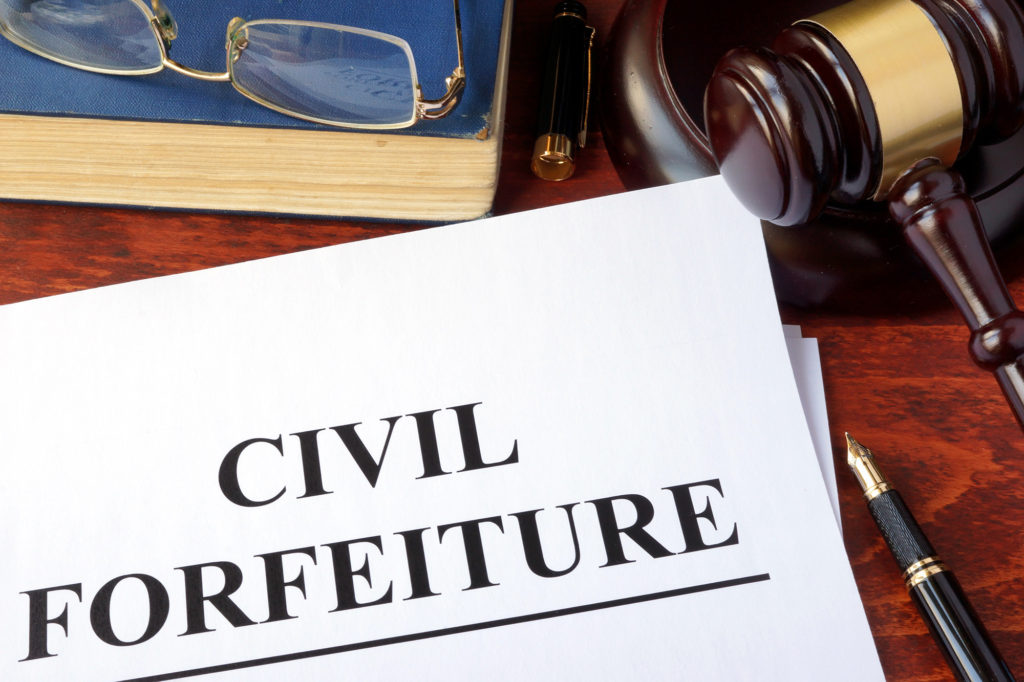Written by Katherine Brisson
When Tyson Timbs pleaded guilty in Indiana state court for selling $225 of heroin to undercover officers, he never expected his case to result in a major Supreme Court decision incorporating a Bill of Rights provision to the States. With the Supreme Court’s unanimous decision in Timbs v. Indiana, however, that is exactly what happened.
Background
In 2015, Mr. Timbs pleaded guilty to a controlled substance offense and conspiracy to commit theft. The Indiana trial court sentenced him to one year of home detention, five years probation, and required him to pay fees and court costs totaling $1,203, which was much less than the $10,000 maximum fine assessable against him for the drug conviction.
When the police arrested Mr. Timbs, they seized his $42,000 Land Rover that he purchased with money from his father’s life insurance policy, claiming that he used it to transport heroin. The State of Indiana brought a civil forfeiture suit for Mr. Timbs’ Land Rover, which the trial court denied. The court explained that the Land Rover was worth more than four times the maximum monetary fine for his drug conviction and that forfeiture would be grossly disproportionate to his offense, making it unconstitutional under the Excessive Fines Clause of the Eighth Amendment. The intermediate appellate court upheld the state court’s denial of forfeiture, but the Indiana Supreme Court reversed, ruling that the Excessive Fines Clause does not apply to the states.
Timbs v. Indiana: Excessive Fines Clause Incorporated to the States
Writing for the Court, Justice Ruth Bader Ginsburg explained, “the historical and logical case for concluding that the Fourteenth Amendment incorporates the Excessive Fines Clause is overwhelming.” Justice Ginsburg detailed the tradition of hostility towards excessive fines through a discussion of the Magna Carta, the English Bill of Rights, colonial-American excessive fine and bail provisions, and State excessive fine provisions. The Court then explained that “the protection of excessive fines has been a constant shield throughout Anglo-American history” against the undermining of other constitutional liberties. At the same time, the Court highlighted the ways in which excessive fines were used after the Civil War to target African-Americans and “subjugate newly freed slaves and maintain the prewar racial hierarchy.”
The Court used the Due Process Clause of the Fourteenth Amendment as the vehicle to incorporate the Excessive Fines Clause form the Eighth Amendment to the states. Interestingly, Justice Clarence Thomas, who wrote separately concurring in the judgment, argued that the Excessive Fines Clause should be incorporated to the States using the Privileges and Immunities Clause of the Fourteenth Amendment instead. Justice Neil Gorsuch, who also wrote separately but still joined the Court’s opinion, mirrored Justice Thomas’ sentiment but reasoned that “regardless of the precise vehicle, there can be no serious doubt that the Fourteenth Amendment requires States to respect the freedom from excessive fines enshrined in the Eighth Amendment.”
Impact of Incorporation: The Future of Civil Forfeiture
For better or worse, civil forfeiture is an important source of revenue for many law enforcement agencies across the country that rely on a steady flow of forfeiture proceeds to purchase equipment. Civil forfeiture does not require a criminal conviction; rather it only requires a showing that the property in question was used in connection with a crime. This practice has received near-universal criticism as a practice that can be egregiously abused for the monetary profit of law enforcement agencies. Wesley Hottot, Mr. Timbs’ attorney, noted that “[t]oday’s ruling should go a long way to curtailing what is often called ‘policing for profit’ – where police and prosecutors employ forfeiture to take someone’s property then sell it, and keep the profits to fund their departments.”
In light of Timbs, police and prosecutors may be required to think differently about when—and against which property—they choose to initiate. One consideration that has not always been at the forefront of the decision is the relationship between the value of the property to be forfeited and the crime it is allegedly connected to. This relationship could be the deciding factor between constitutional and unconstitutional forfeitures from here on.
All 50 states have constitutional provisions prohibiting excessive fines in some form. The Supreme Court’s decision in Timbs will likely influence how state courts interpret these provisions and how they apply to civil in rem forfeiture practices. Alternatively, Timbs may render these state provisions useless if they are not more protective of an individual’s rights than the protections afforded by Excessive Fines Clause of the Eighth Amendment. Individuals who lose property to forfeiture suits may choose to pursue a claim under the Eighth Amendment instead of a state provision, which both impacts the utility of state provisions and increases the amount of litigation in federal court.
Ultimately, the Court’s decision in Timbs is an important one. After Timbs, the only Bill of Rights protections not incorporated to the states is the Third Amendment’s right against the quartering of soldiers, the Fifth Amendment’s right to a grand jury indictment, and the Seventh Amendment’s right to a civil jury trial. The application of the Excessive Fines Clause to the states will have many practical consequences for law enforcement agencies and federal court litigation, and it gives those who lose property to civil forfeiture a way to challenge that decision.
Sources
Adam Liptak and Shalia Dewan, Supreme Court Limits Police Powers to Seize Private Property, New York Times, (Feb 20, 2019).
Amy Howe, Opinion Analysis: Eighth Amendment’s Ban on Excessive Fines Applies to the States, SCOTUSblog (Feb. 20, 2019).
Chris Geidner, The Supreme Has limited How Much Private Property States Can Seize, Buzzfeed News (Feb. 20, 2019).
Timbs v. IN, 586 U.S. ____ (2019).
Photo courtesy of the New York Post.

